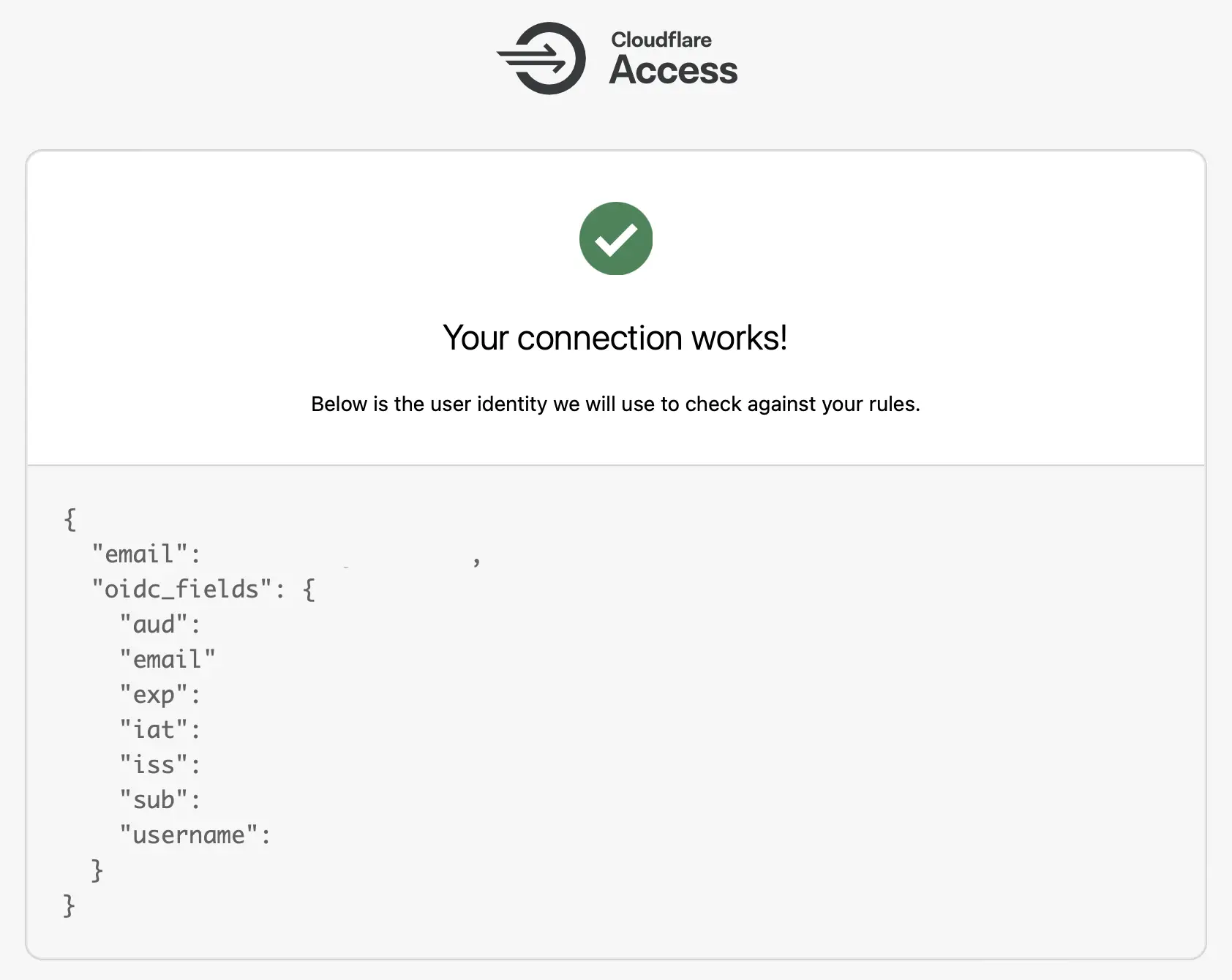Cloudflare Access + Synology SSO Server
A tutorial on how to integrate Cloudflare Access with a Synology SSO Server.
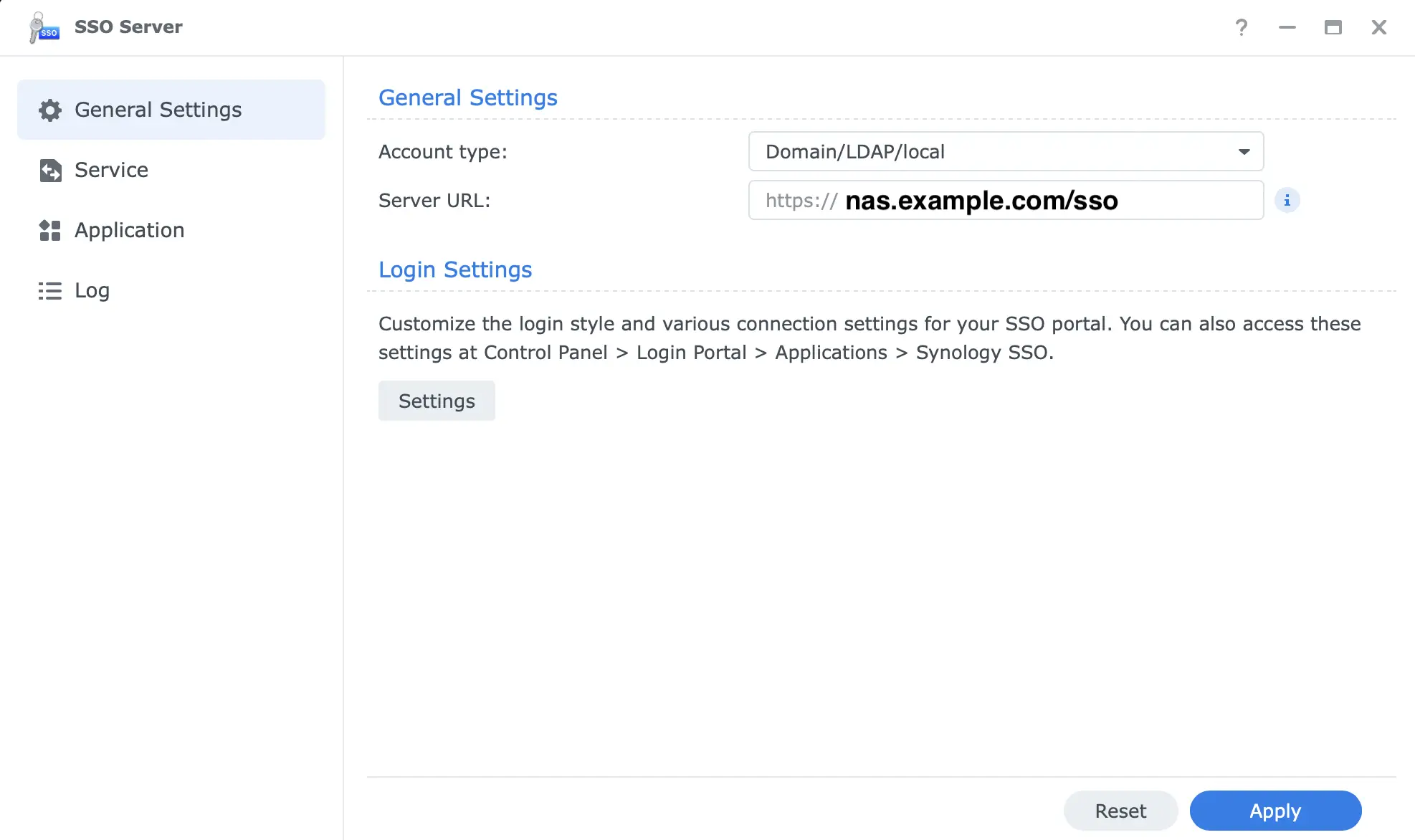
The goal of this tutorial is to log into Cloudflare Access applications by using your Synology DSM credentials.
Setup Synology SSO Server
First download and install the Synology SSO Server package on your NAS by going to Package Center. From there open up the newly installed Synology SSO Server package and change the account type to Domain/LDAP/Local to enable logging in using your DSM credentials. Then edit the server URL field to the external URL you use to access your NAS. I added /sso to the end of my URL to provide distinction. Click Service and enable the OIDC server with the checkbox and click Apply. Go to the Application section in the sidebar. Click Add then select OIDC and click Next. Name your application anything you'd like and enter your Cloudflare Access domain in the Redirect URI Field. Ex. https://example.cloudflareaccess.com/cdn-cgi/access/callback. From there click Edit on your newly added application. This will show you the Application ID and Secret we will need for the next step.
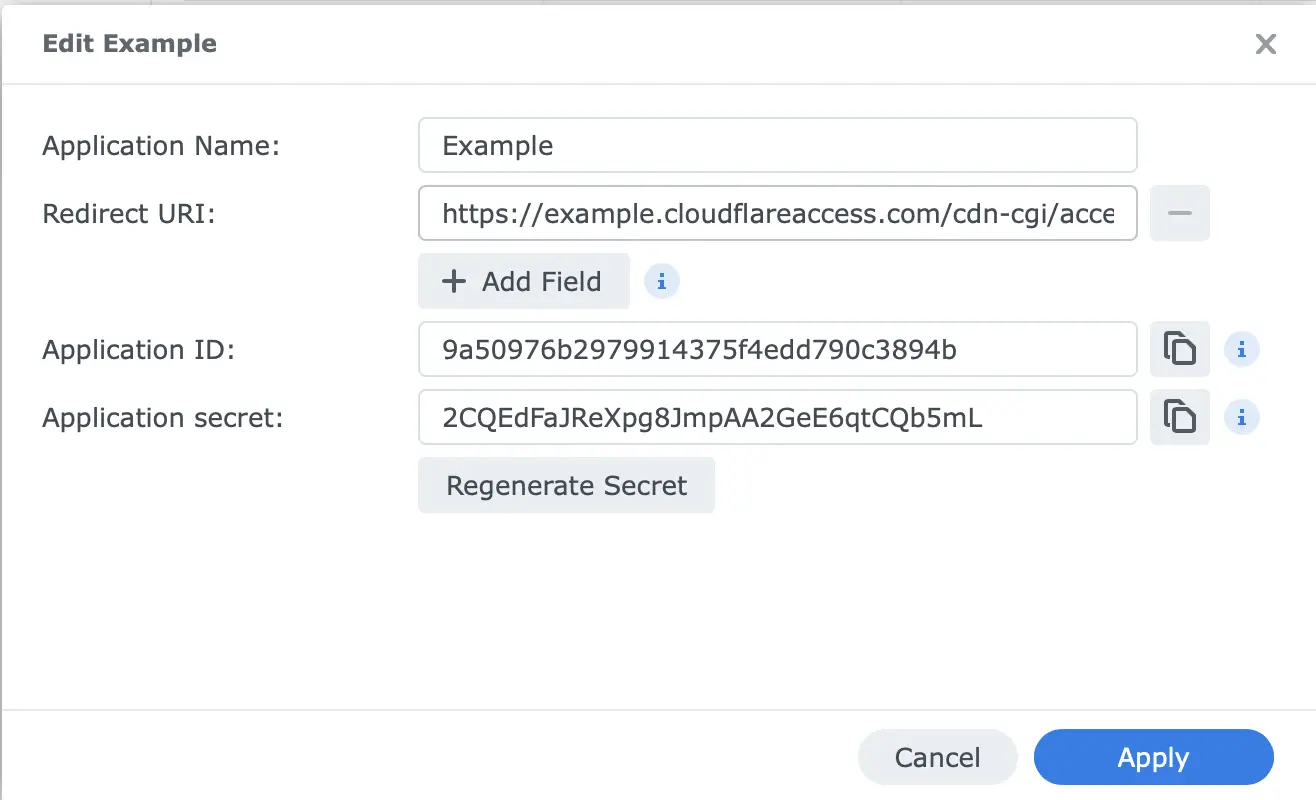
Setup Cloudflare Access
Go to your Cloudflare dashboard and click Zero Trust in the sidebar. Go to Settings then Authentication and click Add New under Login methods. Choose OpenID Connect. Name your OIDC connection anything you’d like. Enter the Application ID value from Synology SSO Server in the App ID field in Cloudflare Access. Enter the Application secret value in the Client secret field. Next we will find the required URLs for Cloudflare Access by going to your Synology SSO Server and clicking Service which will show the OIDC Well-known URL.
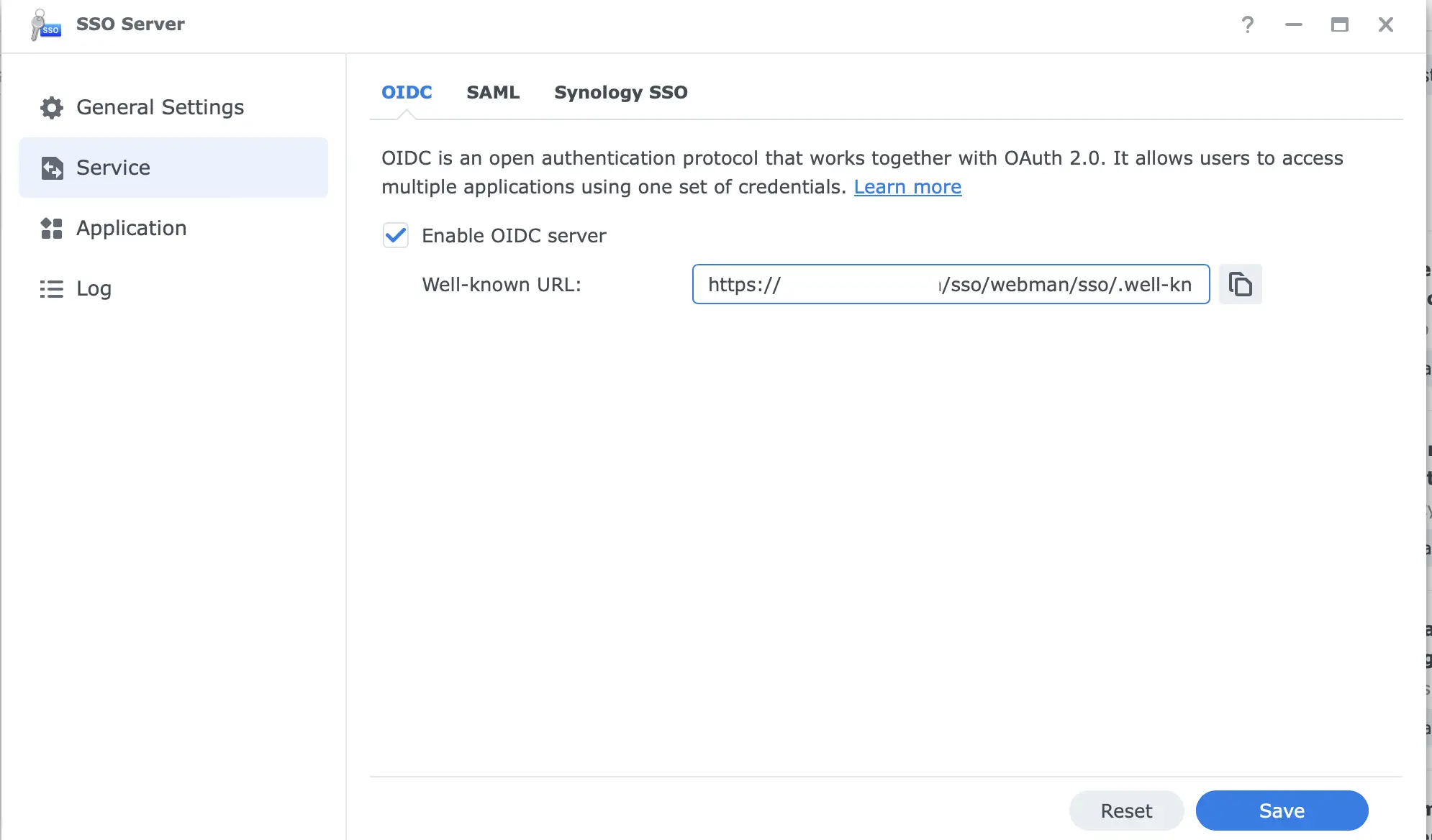
Open this URL in a new tab. Copy the authorization_endpoint URL to the Auth URL field in Cloudflare Access. Copy the token_endpoint URL to the Token URL field. Copy the jwks_uri URL to the Certificate URL field.

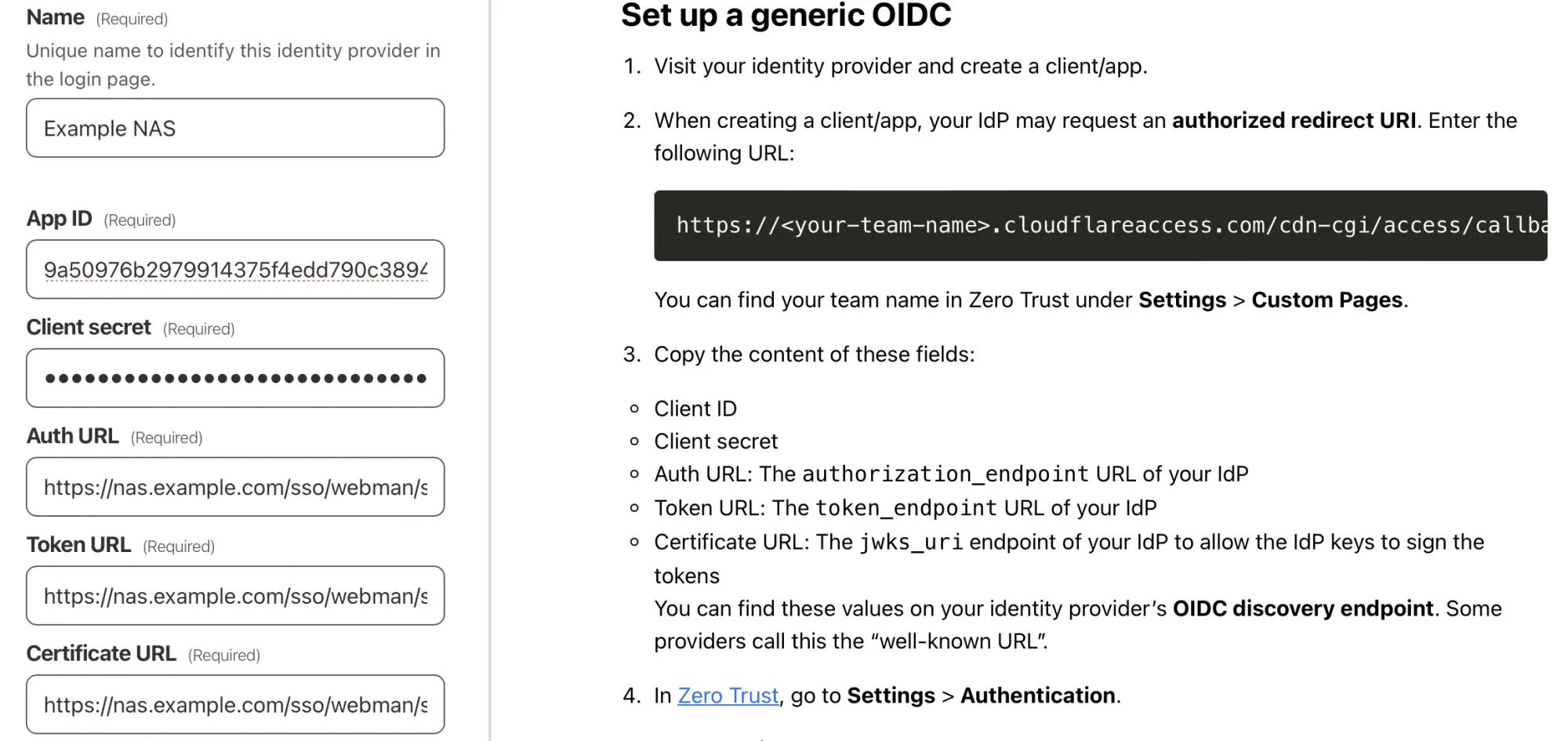
In the Email claim field on Cloudflare Access type email. From there we can test our configuration by clicking the Test button on Cloudflare Access. If everything is set up right you should see a success page. You can now save the configuration and add it to your Applications on Cloudflare Access.
